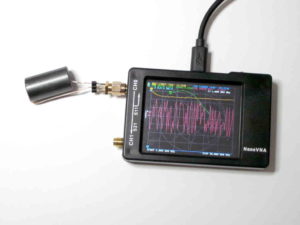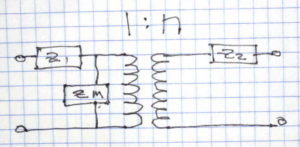This article discusses the use of the (modified) nanoVNA-H raw accuracy and the implications for calibrated measurements.
Introduction
VNAs achieve much of their accuracy by applying a set of error corrections to a measurement data set.
The error corrections are obtained by making ‘raw’ measurements of a set of known parts, most commonly a short circuit, open circuit and load resistor (the OSL parts). The correction data may assume each of these parts is ideal, or it may provide for inclusion of a more sophisticated model of their imperfection. This process is known as calibration of the instrument and test fixture. nanovna-Q appears to have some fixed departure compensation to suit the SMA cal parts, less suited to other test fixtures.
So, when you make a measurement at some frequency, the correction data for THAT frequency is retrieved and used to correct the measurement.
What if there is not correction data for THAT frequency? There are two approaches:
- a calibration run is required for exactly the same frequency range and steps (linear, logarithmic, size) as the intended measurement; and
- existing calibration data is interpolated to the frequency of interest.
The interpolation method is convenient, but adds uncertainty (error) to the measurement. Some commercial VNAs will NOT interpolate.
The nanoVNA will interpolate, and with interpolation comes increased uncertainty.
An uncorrected sweep of a reasonably known DUT is revealing of the instrument inherent error.
The DUT is a 12m length of LMR400.
Expected behavior
Let’s first estimate how it should behave.
The VNA contains a directional coupler nominally designed / calibrated for Zo=50+j0Ω, and in use, VNAs are invariably used to display measurements in terms of some purely real impedance, commonly 50Ω.
Though the DUT characteristic impedance (Zo) is nominally 50Ω, it is not EXACTLY 50+j0Ω and so there are departures in the displayed values wrt 50Ω from what might happen in terms of the actual Zo.
We can calculate the magnitude of Gamma for our 12m OC section of LMR400 over a range of frequencies.

|Gamma| vs frequency is a smooth curve as a result of line attenuation increasing with frequency. As a result in the small departure in Zo, |Gamma| wrt 50Ω has a superimposed small decaying oscillation. Continue reading nanoVNA-H – sweep of a coax line section with OC termination
Last update: 2nd February, 2020, 7:11 AM








